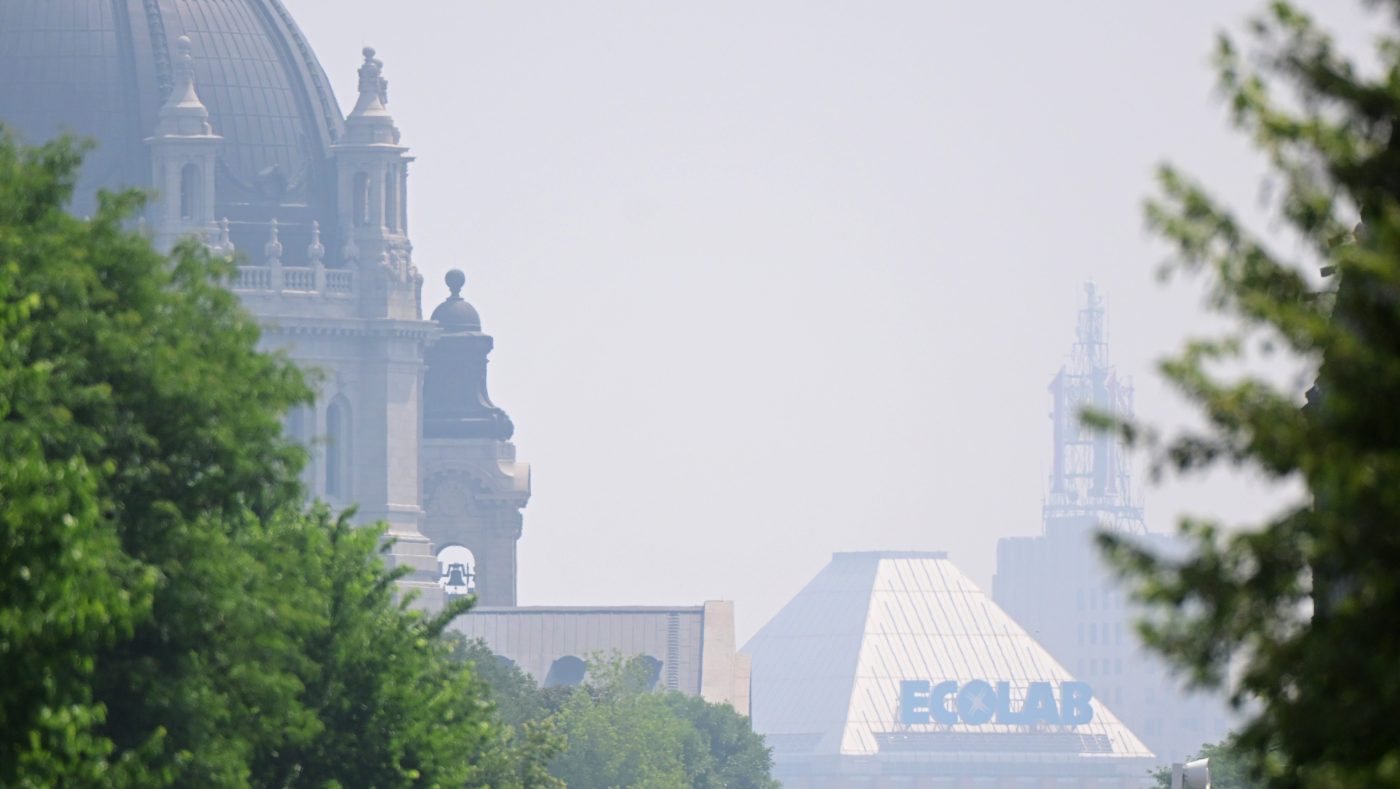
After 2023’s summer of toxic air, MPCA forecasts a better 2024
Minnesotans may breathe easier, knowing that this summer’s air quality will likely be better than it was in 2023, at least if things go as planned, according to the Minnesota Pollution Control Agency.
Agency representatives, along with Gov. Tim Walz, gave a rosier forecast for air quality this summer but warned that the state will see more air quality alerts than in a typical recent year.
“If you have kids with asthma or you yourself have it, you know that last summer was brutal,” Walz said during a Thursday news conference at the Homeland Security and Emergency Management Center in St. Paul.
Minnesota saw 52 air quality alert days, 16 due to wildfire smoke. Nine reached the highest air quality index alert, meaning the air is hazardous for everyone. The agency expects more than seven alerts this summer, according to MPCA meteorologist Matt Taraldsen. The yearly average is five to seven alerts per year.
Air quality index, or AQI, is a color-coded guide that ranges from green (good) to maroon (hazardous). Air quality is determined by hourly measurements of fine particles, ground-level ozone, sulfur dioxide, nitrogen dioxide and carbon dioxide.
Part of the agency’s reasoning for the better forecast, Taraldsen said, was that Canadian wildfires had already started by this time last year and the impacts from El Nino, a climate pattern that has global impacts on weather, will not play a factor this year as the phenomenon wanes. Western Canada remains in severe drought, but Minnesota has seen plentiful rainfall across much of the state following a virtually snowless winter. Only 11% of the state is currently experiencing drought conditions.
The higher the AQI rises, the more people can be harmed, particularly those with health issues, the elderly, children and people exerting themselves in prolonged activities.
“Unfortunately, it became part of many Minnesotans’ daily ritual where they got up and they checked the air quality index to see, could their kids play outside, would it be safe for a run,” Taraldsen said.
While fine particles from wildfires will not play as big of a factor this summer, Taraldsen said surface ozone levels will likely increase due to slightly above-normal temperatures that will create an atmosphere to more easily trap gases, like those from vehicles, closer to the ground.
The Twin Cities and Rochester metro areas will be impacted the most by elevated surface ozone.
A change in how AQI is determined will also show more moderate and very unhealthy alerts but total air quality alerts are not expected to change.
The agency also retooled its AQI website, which will show live updates, three-day forecasts and a graphical state map, as opposed to the one separated by counties that was used in previous years.
Walz said the state recently invested $6 million in aviation infrastructure to combat state wildfires and that the state will continue to monitor issues surrounding climate change.
In 2015, air pollution played a role in 10% of all deaths in the Twin Cities metro area, 8% of all deaths in Duluth and 10% of all deaths in Rochester, according to MCPA.
Related Articles
Residents begin going through the rubble after tornadoes hammer parts of Nebraska and Iowa
St. Paul’s two extreme winters prompt new look at snow emergencies
North Shore streams, and their steelhead trout, are running
Can’t get enough of the total solar eclipse or got clouded out? Here are the next ones to watch for
Watch: 2024 total solar eclipse

